You are here
Fauna of Ustyurt Plateau.

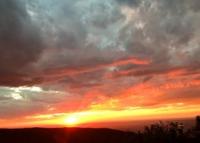
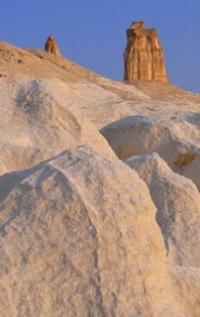
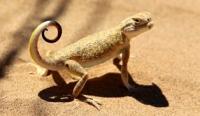
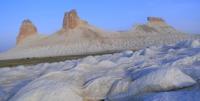
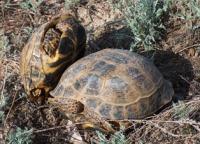


Wildlife Tours in Uzbekistan.
“Not all those who wander are lost”
J.R.R. Tolkien.
Flower Tours in Uzbekistan.
The Ustyurt Plateau is an elevated plateau occupying the northern part of the Aral-Caspian watershed. The plateau is limited on all sides by cliff dropping steeply to the sea, which are the steep shores of the ancient Triassic sea. In the east, cliff Ustyurt is formed by the former western coast of the Aral Sea.
In the south it breaks off to the Kunya-Darya ancient alluvial plain and the valley of Uzboy. In the west - to the Karynzharyk depression and to the sands of the North Caspian Kara-Kum, and in the north - to the Caspian lowland.
The landscape is represented by a clayey and clayey gravelly desert. There are areas of salt marsh and sandy desert. There are no permanent streams on the plateau. On clay soils after rains, temporary freshwater lakes are formed. In the south, Sarykamysh Lake is located, which arose in the 1970s. as a result of flooding by waste waters of the same-name hollow.
The plateau is located in the administrative borders of the three neighboring countries: Kazakhstan, Uzbekistan and Turkmenistan, however, about 70% of the area falls on Uzbekistan. In Uzbek Ustyurt there are over 300 species of vertebrates, including migratory birds.
Regional endemics are the Central Asian steppe tortoise Agrionemys horsfieldi, the multi-colored lizard erysipelas Eremias arguta, the jerboa of Severtsov Allactaga severtzovi and the pinworm gerbil Meriones tamariscinus.
The rare species of vertebrates made to the international IUCN Red List and the Red Data Book (2009), include: steppe tortoise, the four band snake Elaphe quatuorlineata, long needle hedgehog Hemiechinus hypomelas, honey badger Mellivora capensis, corsac fox Vulpes corsac, caracal Felis caracal, gazelle Gazella subgutturosa, Ustyurt urial Ovis vignei arkal and Saiga tatarica saigas, as well as Aquila rapax nesting eagles, Aguila heliaca burial eagles, Aguila chrysaetos eagles, Haliaeetus albicilla, the eagle, Circaetus gallus, the eagle, Haliaeetus albicilla, the eagle, the Circaetus gallus, Circaetus gallus, an eagle, an eagle from Aguila chrysaetos.
This study focuses on the study of the fauna of amphibian, reptile and mammal complexes inhabiting the cliffs of the cliff of the Eastern Ustyurt and the cliff zone. The cliff cliffs are a transition zone from areas of the clay semi-desert to the coastal zone of the Aral Sea and the lakes adjacent to the plateau.
Cliff have excellent protective properties due to the formation of cracks, voids, depressions, ledges, ravines and canyons, which attracts many species of animals. All this determines the high level of the types of wealth and diversity of this natural climatic zone and its importance for maintaining the overall biological diversity of the Ustyurt region.
According to the literature, there are 14 species of reptiles living in the Eastern Cliff (Testudines squad - 1 species, Squamata - 13 species) and 1 species of amphibians (Anura squad). Four landed snakes are listed in the Red Book of Uzbekistan (2009), the Central Asian tortoise is listed in the IUCN International Red Lists.
The list of mammals includes 29 species, of which 3 species belong to the order Insectevora, Chiroptera - 2 species, Lagomorpha - 1 species, Rodentia - 12 species, Carnivora - 8 species, Artiodactyla - 3 species.
The studies were conducted at three monitoring sites located in the northern part of the Eastern Cliff in the vicinity of the Aktumsyk cape and in the cliff zone near the Duan spring, in the vicinity of the Sudochye lakes system and the Sarykamysh lake.
The specificity of cliff is that it has a large length, but occupies a small area. Cliff can look from a completely impassable steep cliff up to 100 meters in height to a gentle slope with various transitional forms, for example, ledges or terraces.
The area of Cape Duane and Cape Aktumsyk.
The relief of the northern part of the East cliff Ustyrt on the section from Cape Duan to Cape Aktumsyk is uneven, all over it has the appearance of a cliff with a sheer wall. There are no permanent sources of water, there are seasonal surface drains generated by precipitation.
In the cliff zone there are springs - Duane and Aktikendy. The plateau near cliff is strongly deflated and destroyed with the formation of huge cracks, faults resulting from the sliding of limestone. The vegetation cover of this area is characterized by great diversity.
There are traces of anthropogenic impact on the site - an old ultra-deep well with remnants of man-made debris and degraded vegetation cover. In addition to the above-mentioned ultra-deep well, the anthropogenic impact is also manifested in the fact that an existing old gas pipeline is being reconstructed on a stretch of several tens of kilometers, for which a trench was dug and a high parapet was poured, which in total represents an insurmountable barrier for animals.
Reptiles on the Ustyurt plateau.
The Central Asian tortoise, the swift FMD Eremias velox, the arrow-snake Psammophis lineolatum and the Pallas mummy Agkistrodon halys were found on the chink. In the subordinate zone, the steppe tortoise, the takyr roundhead of Phrynocephalus helioscopus, the swift frog, the gray Cyrthopodion russowi, and the Caspian C. caspius geckos, the arrow-snake, the transversely striped Coluber karelini, and the multicolored C. ravergieri snakes were also noted.
The number of quick desert lacerta on cliff was 1.8 individuals per hectare, under the fix - 3.2 individuals / hectare. Desert lacerta adhere to places with dense grassy vegetation rich in insects. In cliff faults, gray and Caspian geckos were found under stones, on the burial grounds and walls of the destroyed buildings.
Gray geckos were also found in the saxaul under the cliff. The number of Caspian gecko was 0.46 individuals per hectare, gray - 0.2 individuals per hectare. The number of arrow-snake and multi-colored snake in the cliff zone was 0.2 individuals per hectare, and the steppe tortoise - 0.16 individuals per hectare.
It is interesting to note that we only met female turtles. The number of takyr round heads was 2.5 individuals per hectare.
Mammals on the Ustyurt plateau.
Cliff attracts mammals for several reasons: there are few springs, which are a watering place for animals; good protective conditions (descending from a cliff, you can hide from enemies from the wind); richer vegetation represents the best food supply for herbivores; in winter, on the edge of the cliff, the wind blows snow away, and it is easier for animals to move around.
Therefore, there is a “corridor” for migratory ungulates, such as saiga and wild boar Sus scrofa. Accounting for the number of rodents on this site was carried out on foot, the surveyed area was 4 hectares. Three species of rodents were found: the great gerbil Rhombomys opimus, the common mole lemmings (Ellobius talpinus) and the small jerboa Allactaga elater.
All species are background for the Ustyurt Plateau. The population of the large gerbil was 0.83 individuals per hectare, the habitability of the colonies was 30%. It was also found 2 residential colonies mole lemmings (Ellobius) and 4 residential holes of a small jerboa.
Three groups of saigas are noted here, with a total of 6 individuals. Under the cliff, we also found traces of a boar, badger Meles leucurus and wolf Canis lupus. The presence of such species as wild boar and badger is a feature of the cliff and around cliff zone, located close to the Aral Sea and the Sudochie lakes system.
In other parts of the plateau with the exception of Sarykamysh, these species are not found. Thus, on this site 7 species of mammals are noted. A feature of this site is also the presence of swept layouts, or Arans - giant hunting structures that serve for hunting large-scale ungulate animals, which serves as an indirect indication that these species lived in the area.
Groups of such structures are located, including in the north-east of Ustyurt, and are included in the “North Ustyurt system of swept layouts”. They are located on the paths of seasonal migrations of ungulates, and in the past were used to hunt saiga, Equan hemionus, and gazelle.
According to our data, saigas are most often found precisely in the area of dislocation of the described system of swept layouts, where ancient hunters collectively and successfully carried out their large-scale hunting.
The direction of migration is due to environmental factors. The beginning of migration causes the establishment of snow cover.
Authority:
Bykova E. A. “Fauna of terrestrial vertebrates of the Eastern Chinka plateau Ustyurt”. E. A. Bykova, A. V. Esipov, D. E. Golovtsov, D. A. Nurizhanov. Bulletin of Tyumen State University. Ecology and nature management. 2017. Volume 3. Number 4. ttps://vestnik.utmn.ru
Photos by
Alexander Petrov.







